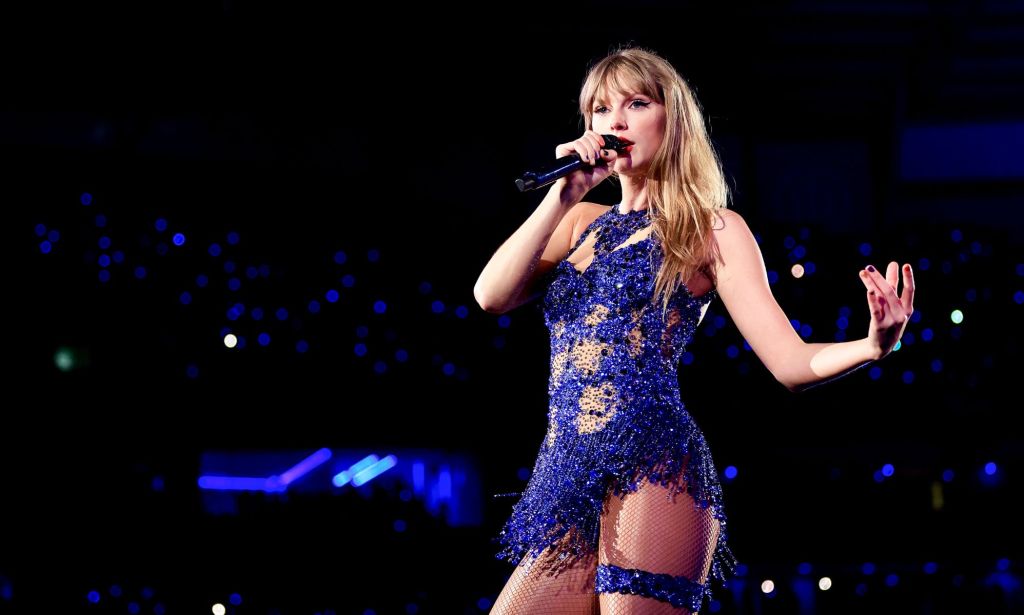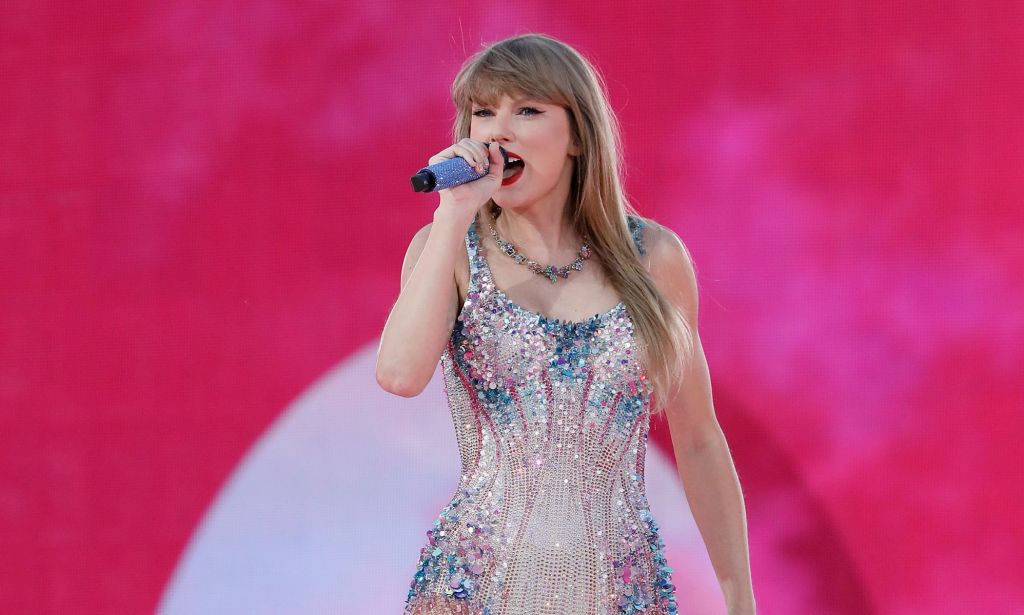Taylor Swift and the NYT: Here’s why it’s not OK to speculate about celebs’ sexuality

Taylor Swift’s team is reportedly furious after the New York Times published an ‘invasive, untrue and inappropriate’ op-ed speculating about the singer’s queer identity, an insider told CNN. (Getty)
Taylor Swift’s team is reportedly fuming after the New York Times published an article speculating about the record-breaking, multi-award winning pop icon’s sexuality.
In the New York Times (NYT) op-ed, published Thursday (4 January), the writer claimed there are various “easy-to-decode clues” within Swift’s discography and personal life that hint that the singer is secretly queer.
Swift has been known to drop Easter eggs in her work, but the singer’s team allegedly say the New York Times op-ed has taken things too far.
A purported insider told CNN that the NYT article was proof that there “seems to be no boundary some journalists won’t cross when writing about Taylor, regardless of how invasive, untrue and inappropriate it is – all under the protective veil of an ‘opinion piece’”.
“Because of her massive success, in this moment there is a Taylor-shaped hole in people’s ethics,” the individual added.
“This article wouldn’t have been allowed to be written about Shawn Mendes or any male artist whose sexuality has been questioned by fans.”
While there’s nothing inherently wrong about reading queerness in someone’s art, speculation that a celebrity might be queer is divisive and can be harmful.
Let’s take a look at the situation with Taylor Swift – and then break down why this kind of speculation isn’t, ultimately, helpful.
The NYT article claims Taylor Swift has hinted her queerness throughout her career

According to New York Times’ opinion section editor Anna Marks, Swift has “dropped hairpins” – a slang term for letting others know you are queer – for as long as she’s been in the spotlight.
To support this assertion, Marks included references to Swift’s ‘Lover Era’ aesthetic, including “rainbows, butterflies and pastel shades of blue, purple and pink, colours that subtly evoke the bisexual pride flag”.
The article also highlighted Swift releasing her single “ME!” on 26 April, which happens to be Lesbian Visibility Day, and that the music video for her “You Need to Calm Down” hit includes an “army of queer celebrities from across generations”.
“In isolation, a single dropped hairpin is perhaps meaningless or accidental, but considered together, they’re the unfurling of a ballerina bun after a long performance,” Marks wrote.
“Those dropped hairpins began to appear in [Taylor Swift’s] artistry long before queer identity was undeniably marketable to mainstream America.
“They suggest to queer people that she is one of us. They also suggest that her art may be far more complex than the eclipsing nature of her celebrity may allow, even now.”
What has Taylor Swift said about her sexuality?

Back in 2019, the “Lavender Haze” hitmaker spoke to Vogue about why she’s been so vocal about LGBTQ+ rights in recent years. She told the outlet that she “didn’t realise until recently” that she could “advocate for a community that [she’s] not a part of”.
“Rights are being stripped from basically everyone who isn’t a straight white cisgender male,” she said.
In the prologue for her 1989 (Taylor’s Version) album, which dropped in October, Swift further opened up about being the target of rumours about her dating life and sexuality as her fame has increased.
Swift wrote in the notes to the album that being the “target of slut shaming” and “jokes about [her] amount of boyfriends” had “hurt”.
So to “make it stop”, she swore off “hanging out with guys, dating, flirting or anything that could be weaponised against [her] by a culture that claimed to believe in liberating women but consistently treated [her] with the harsh moral codes of the Victorian era”.
However, Swift said that focusing on herself, her work and her female friendships didn’t stop the rumours about her sexuality.
“If I only hung out with my female friends, people couldn’t sensationalise or sexualise that – right?” she wrote. “I would learn later on that people could and people would.”
Why can it be harmful to speculate about a celeb’s sexuality?

Someone’s sexuality is ultimately no one else’s business. But the relentless, often toxic rumours and speculation about a celebrity’s personal life can put undue pressure on them to come out.
Dove Cameron, Rita Ora, Jameela Jamil and Kit Connor are all examples of celebrities who have said they felt they had to come out publicly after being accused of queerbaiting.
Speaking to British Vogue last July, Heartstopper star Connor revealed he would have “preferred to do it [come out] in another way” instead of feeling forced to do so on social media,
“It wasn’t something I was ready to talk about,” he said. “I wasn’t angry. I was just slightly disappointed by this reaction. I don’t think it’s anyone else’s business, and I’m super young.”
Actor Rebel Wilson has spoken multiple times about how “hard” it was after she was “forced” to come out, despite never keeping her relationship a secret.
And musician Harry Styles said that pressure to label his sexuality is “outdated”, adding that society should be moving to a point where people don’t have to “clarify what boxes you’re checking”.
Why is there backlash to the act of acknowledging the possibility that an artist could be queer?

Celebrities coming out as LGBTQ+ is more common than ever. So a beloved actor or musician declaring their queerness is rarely the pearl-clutching shock it was 20 or 30 years ago.
There’s nothing wrong with being LGBTQ+, or even just casually wondering whether a public figure might be part of the community, or queer people reading queerness in their favourite celebrity’s work.
Nobody bats an eye at the assumption someone is straight or dating someone of the opposite gender – yet, there can be tonnes of toxicity when someone brings queerness into the equation.
If knowing that (or even wondering if) a celebrity is queer changes the way fans think about their connection to their work or individual, then it sends the message that there could be something negative about being part of the LGBTQ+ community.
In the New York Times article, Marks referenced that “even the possibility that [Taylor Swift] could be queer would irrevocably alter the way they [fans] connect with her celebrity, the true product they’re consuming”.

Marks also preemptively acknowledged critics of the piece’s speculation on Swift’s identity. The writer knew that “discussing the potential of a star’s queerness before a formal declaration feels, to some, too salacious and gossip-fuelled to be worthy of discussion”.
“They might point to the viciousness of the discourse around ‘queerbaiting’ (in which I have participated); to the harm caused by the tabloid press’s dalliances with outing; and, most crucially, to the real material sacrifices that queer stars make to come out, again and again, as reasons to stay silent,” Marks wrote.
“But the stories that dominate our collective imagination shape what our culture permits artists and their audiences to say and be.
“Every time an artist signals queerness and that transmission falls on deaf ears, that signal dies.
“Recognising the possibility of queerness – while being conscious of the difference between possibility and certainty – keeps that signal alive.”
How did this story make you feel?

